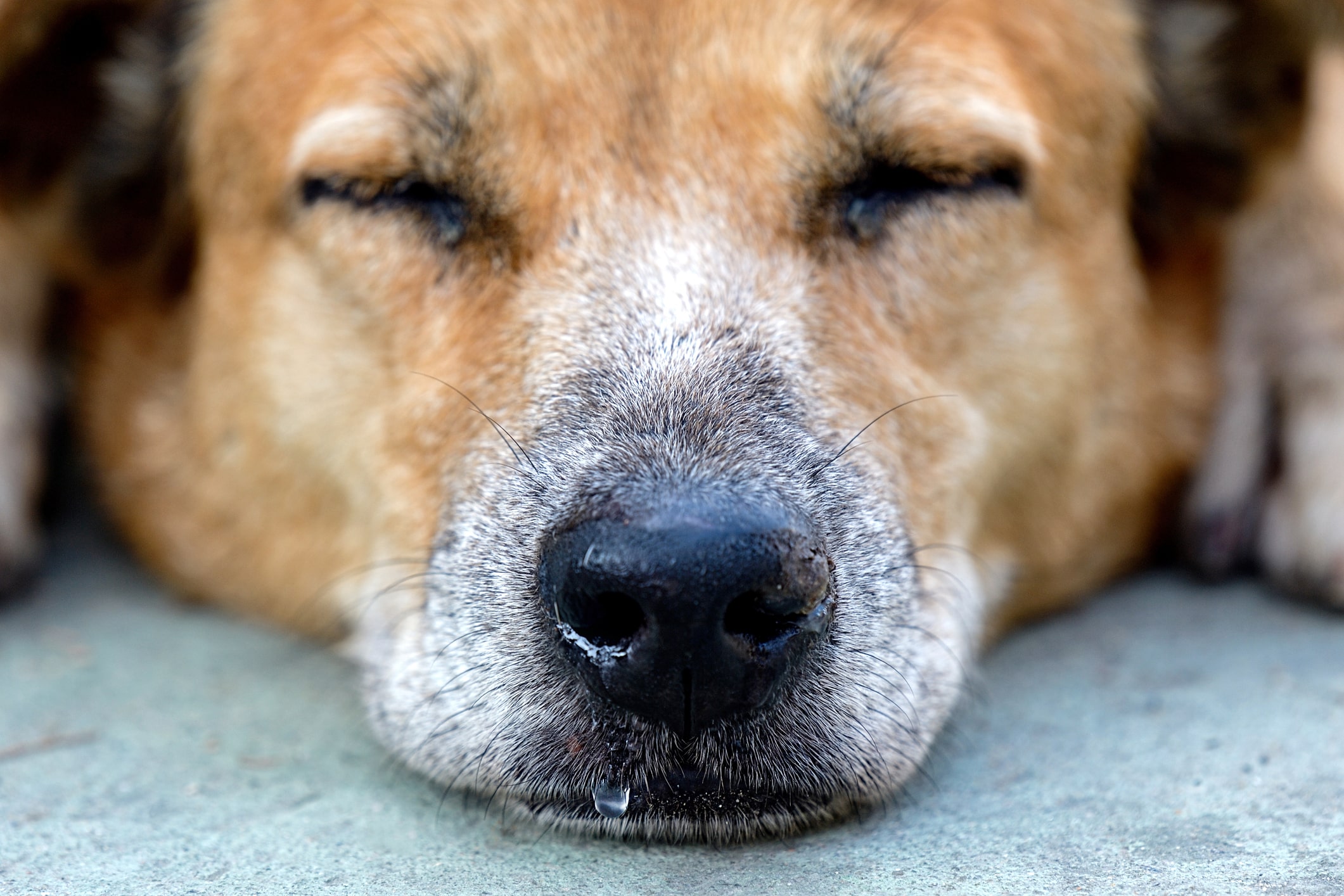Living in Florida with our Golden Retriever Harley and our Akbash Sasha, we share the concerns of dog parents across the United States amidst the rising wave of canine respiratory illnesses. This alarming trend, capturing the attention of both pet owners and veterinary professionals, has sparked a nationwide discussion about canine health. In regions from Florida to California, cases of this mysterious illness are surfacing, with symptoms that are both concerning and puzzling. As dog lovers, the health and well-being of our pets are paramount, and the current situation underscores the need for awareness and proactive care. In this article, we aim to explore the known aspects of this outbreak, identify the symptoms to watch for, and discuss practical steps to protect our beloved dogs in these uncertain times. Our goal is to stay informed and vigilant, to safeguard the health of our canine companions.
Understanding the Outbreak
The recent increase in canine respiratory disease cases have been observed across various U.S. regions, leading to heightened vigilance among experts. Veterinary professionals are tirelessly analyzing these cases to determine if they represent a new pattern or are part of normal seasonal variations. The exact nature of this outbreak is yet to be fully understood, as no specific causative agent has been identified. This lack of clarity presents a significant challenge in formulating a comprehensive response. Research efforts are ongoing to pinpoint potential causes and understand the transmission dynamics of this illness. As we await more conclusive information, veterinarians across the country are advising dog owners to take precautionary measures, emphasizing the importance of being attentive to our pets’ health during this time. This collective effort in understanding and responding to the outbreak is crucial in navigating the current challenges in canine health care.
Recognizing and Monitoring Key Indicators of Canine Respiratory Illness
In dealing with the current canine respiratory illness outbreak, it is vital to not only recognize the key symptoms but also to maintain an overall vigilant and observant approach to your dog’s health. This comprehensive awareness can be crucial in early detection and effective management of the illness. Below are the primary symptoms to look out for, along with essential practices for monitoring your dog’s health and responding appropriately to any signs of respiratory distress.
Symptoms of Canine Respiratory Illness
- Noticeable Cough: A persistent cough is a primary symptom.
- Nasal Discharge: Look for any nasal discharge, which can vary in severity.
- Changes in Respiratory Effort: Unusual breathing patterns are a key indicator.
- Behavioral Changes: Note any changes in your dog’s usual behavior.
Monitoring and Response Strategies
- Close Monitoring: Regularly observe your dog for symptoms.
- Potential Escalation: Be aware that respiratory issues can worsen if untreated.
- Early Detection: Prompt recognition of symptoms is crucial for early intervention.
- Consult a Veterinarian: Seek professional advice if symptoms persist.
- Vigilance: Maintain a vigilant approach to your dog’s health.
- Prompt Action: Quick response can lead to more effective outcomes.
The Geographic Spread – States Reporting the Highest Number of Cases
As this mysterious respiratory illness in dogs’ garners national attention, it is important to understand its geographic impact. According to recent reports, the disease has been identified in 14 states across the country, indicating a widespread issue.
States with Reported Cases:
- California
- Colorado
- Florida
- Georgia
- Idaho
- Illinois
- Indiana
- Maryland
- Massachusetts
- New Hampshire
- Oregon: Notably, Oregon has reported over 200 cases since mid-August.
- Rhode Island
- Vermont
- Washington
In these states, the illness has manifested with symptoms ranging from chronic mild-moderate tracheobronchitis to severe pneumonia. The disease’s resistance to common antibiotics adds to the concern. As the veterinary community and health authorities continue their investigation, dog owners in these states are advised to be particularly vigilant and follow the recommended preventive measures.
What Dog Owners Can Do
As dog owners, our primary concern during this outbreak is the safety and health of our pets. There are several steps we can take to minimize the risk of infection and safeguard our furry companions. By following these preventative measures, we can help reduce the spread of the respiratory illness and ensure the well-being of our dogs. Here is a list of recommended actions to consider:
- Isolate Symptomatic Dogs: Keep symptomatic dogs at home. Avoid contact with other dogs for a minimum of two weeks.
- Limit Dog-to-Dog Contact: Reduce your dog’s exposure to others, especially unfamiliar ones. Known healthy dog interactions may still be safe.
- Select Facilities Carefully: Choose boarding and grooming with care. Ensure they exclude symptomatic pets and mandate vaccinations.
- Stay Up-to-Date on Vaccinations: Keep your dog’s vaccinations current. This is crucial even if the outbreak is not linked to typical vaccine-preventable diseases.
- Observe for Symptoms: Watch your dog for any signs of respiratory illness. Early detection is key to prevention and treatment.
- Avoid Dog Parks and Crowded Areas: Steer clear of dog parks and other crowded canine areas during this time. This helps minimize the risk of transmission.
- Practice Good Hygiene: Maintain good hygiene practices with your dog. Regular washing and grooming can help reduce the spread of any illness.
- Consult Your Vet for Advice: Talk to your veterinarian about additional preventive measures. They can provide personalized advice based on your dog’s health.
- Stay Informed: Keep up with the latest news and advice from reliable sources. Staying informed helps you make the best decisions for your pet.
- Prepare for Isolation Needs: Have a plan in case your dog needs to be isolated. Ensure you have enough supplies and a comfortable space for them.
- Educate Yourself About Canine Health: Learn more about canine respiratory diseases. Understanding symptoms and treatments can be beneficial.
- Share Information with Other Dog Owners: Share what you know with other dog owners. Community awareness can help control the spread of the illness.
When to Seek Veterinary Care
Identifying the right time to seek veterinary care is crucial for your dog’s health during this outbreak. Certain symptoms signal the need for professional attention. These include:
- Copious Nasal Discharge: If your dog shows significant nasal discharge, it’s a clear sign to consult a vet.
- Changes in Appetite or Energy: Any noticeable alteration in eating habits or energy levels warrants a vet visit.
- Difficulty Breathing: Struggling to breathe is a serious symptom requiring immediate veterinary care.
- Persistent or Worsening Symptoms: If symptoms persist or worsen, do not delay in seeking veterinary assistance.
Veterinarians have set protocols to manage this situation safely. They suggest:
- Call Ahead: Contact your vet from your car upon arrival. This helps in preparing for your visit while minimizing the risk of spreading the illness.
- Use of Isolation Areas: Many clinics have designated isolation areas for dogs showing respiratory symptoms. This is to prevent the spread of illness to other pets in the clinic.
- Follow Clinic Protocols: Adhere to any specific instructions provided by your vet’s office. This may include wearing masks or using designated entrances.
Remember, early intervention can be key in managing respiratory illnesses in dogs. By being attentive to these symptoms and following veterinary protocols, we can ensure the best possible care for our pets during this time.
Uniting in Vigilance and Care
As the canine respiratory illness sweeps through various states, affecting countless dogs, I find myself increasingly vigilant for the well-being of my own pets, Harley and Sasha. This outbreak has heightened my awareness and sense of responsibility towards not only them but all the dogs in our community. It has become more than just staying informed; it is about taking proactive steps to protect these cherished members of our families.
We are in a time where sharing experiences and advice with fellow dog owners is invaluable. Our collective efforts in monitoring for symptoms, adhering to veterinary guidelines, and being cautious in our dogs’ interactions can make a significant difference.
In awaiting more definitive information about this illness, the commitment we show towards our dogs’ health is a testament to the special place they hold in our lives. Together, with care and precaution, we can help safeguard the health and happiness of our canine companions.
Q & A
Q: What Are the Symptoms of the Mysterious Canine Respiratory Illness?
A: The symptoms of this illness include chronic tracheobronchitis, acute or chronic pneumonia, rapid or difficult breathing, dehydration, fever, nasal or eye discharge, weight loss, loss of appetite, and lethargy. These signs are similar to kennel cough but are more severe and less responsive to standard antibiotics.
Q: How Many States Are Affected by the Canine Respiratory Disease Outbreak?
A: As of recent reports, the canine respiratory disease has been reported in 14 states across the U.S., from California to Florida. Oregon has reported over 200 cases, highlighting the widespread nature of this health issue.
Q: How is the Canine Respiratory Illness Transmitted Among Dogs?
A: The exact transmission method of the canine respiratory illness is still under investigation. However, it is believed to spread through close contact and shared air, particularly in communal environments like dog parks, shelters, and boarding facilities.
Q: What Treatment is Available for Dogs Affected by the Respiratory Illness?
A: Current treatment for the respiratory illness in dogs is primarily symptomatic and supportive. This includes oxygen therapy, nebulization, and antibiotics for secondary infections. There is no specific treatment targeting the unknown pathogen causing the illness.
Q: What Preventative Measures Can Dog Owners Take Against the Respiratory Illness?
A: Dog owners are advised to keep their pets’ vaccinations up-to-date, avoid dog parks and crowded pet facilities, and be cautious with dog boarding. If a dog shows any respiratory symptoms, it is important to consult a veterinarian and keep the pet isolated from other animals.




